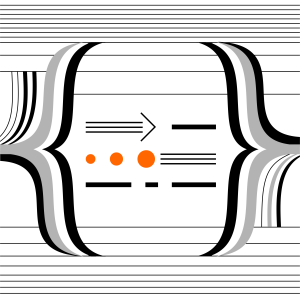The Unseen Heartbeat: A Deep Dive into the World of Modern Pumps
You almost never think about pumps, yet your life depends on them. They are the silent, powerful heart of our world, moving water to your tap, fuel to your car, and, perhaps most importantly, gently coaxing grapes into becoming fine wine. This isn't just about plumbing; it's about a multi-billion dollar industry of high-tech fluid dynamics. This article is a deep dive into that world. We'll trace the history from an ancient Greek screw to intelligent, connected systems. We’ll meet the corporate giants—Grundfos, KSB, ITT Goulds, Sulzer—that battle for dominance. We'll take a special look at the unique, delicate world of winemaking, where the wrong pump can ruin a vintage. And finally, we'll explore the weird and wonderful innovations pushing the boundaries of how we move liquids.
Introduction: The Pressure Economy
Here’s a fun fact: the single biggest consumer of electricity in the industrial world isn't lights, or computers, or even giant robots. It’s pumps. Roughly 10% of all global electricity is consumed by pumps, moving trillions of gallons of… well, everything. Water, oil, sewage, chemicals, blood, beer, and the delicate juice that will one day become a $500 bottle of Napa Cabernet.
Pumps are the circulatory system of civilization. They are so fundamental, so ubiquitous, that they have become completely invisible. You turn on the tap, and water comes out. You flush the toilet, and the problem goes away. You fill your car, and gasoline appears. This isn't gravity or magic. It's a complex, global network of pumps, engineered to within an inch of their lives, humming away in basements, under streets, and inside factory walls.
This invisibility is a testament to their reliability. But it hides a fascinating world of intense competition and brilliant engineering. The business of creating a pressure differential—which is all a pump really does—is a battleground for a handful of global titans. And nowhere is the choice of pump more critical, more artisanal, than in the making of wine, where a single bad decision can turn a masterpiece into vinegar.
So let's pull back the curtain on the unseen heartbeat of our world. It's a story of physics, finance, and fine fermentation.
Chapter 1: From Archimedes to Automation
The basic idea of moving water uphill is as old as civilization itself. For millennia, it was back-breaking work involving buckets. Then, around the 3rd century BC, a Greek fellow named Archimedes had a brainwave.
The Archimedes Screw is a stroke of pure genius. It’s a giant screw inside a hollow pipe. Turn the screw, and it lifts water up the threads. It was so effective that variations of it are still used today for irrigation and wastewater treatment. It was the first real pump: a machine that replaced muscle with mechanics.
For the next 2,000 years, not much changed. We got better materials and power sources (windmills, water wheels, eventually steam), but the pumps were mostly simple piston or plunger designs. The real revolution came with two key developments: the centrifugal pump and the electric motor.
The centrifugal pump, conceptualized in the 17th century but perfected in the 19th, is the foundation of the modern pump world. The principle is elegant:
-
Fluid enters the center (the "eye") of a spinning disc with vanes, called an impeller.
-
The spinning impeller flings the fluid outwards at high speed using centrifugal force.
-
This high-velocity fluid is then forced into a snail-shaped casing (the "volute") that slows it down. As the fluid slows, its kinetic energy is converted into pressure.
Combine this with a compact, powerful electric motor, and you suddenly have a machine that can move massive volumes of liquid, reliably and continuously. The 20th century became a race to perfect this design, making it more efficient, more durable, and adaptable to an infinite variety of liquids.
Chapter 2: The Masters of Flow
The modern pump industry is dominated by a few colossal players. They are the quiet giants you’ve never heard of, but whose products are almost certainly within a few hundred feet of you right now.
1. Grundfos: The Danish Maestro of Efficiency
If pumps had a rockstar, it would be Grundfos. Founded in a basement in Bjerringbro, Denmark, in 1945, this company has become a global goliath by focusing on one thing: efficiency. They realized early on that the purchase price of a pump is a tiny fraction of its total lifetime cost. The real cost is the electricity it consumes for 20 years.
Grundfos pioneered the use of intelligent controls, variable frequency drives (VFDs), and advanced materials to create pumps that sip energy instead of guzzling it. They are the market leader in circulator pumps (for heating and cooling in buildings) and a powerhouse in water and wastewater treatment.
Exemplary Grundfos Models:
-
The Grundfos CR Series: This is the most famous vertical multistage inline pump in the world. "Multistage" means it has multiple impellers stacked on top of each other, each one adding more pressure. It’s like a turbocharger for water. The CR is incredibly versatile and can be found boosting water pressure in skyscrapers, feeding high-pressure boiler systems, and in industrial washing applications. The latest versions, the CRE, come with integrated VFDs, making them ridiculously efficient.
-
The ALPHA Series: This is the pump that conquered the residential heating market. It’s a small, "smart" circulator pump. Older circulators ran at one constant speed, wasting huge amounts of energy. The ALPHA has a feature called AUTOADAPT that analyzes the heating system's demand in real-time and adjusts its speed accordingly. It was a revolutionary product that has saved terawatt-hours of electricity worldwide.
2. KSB: The German Engineering Powerhouse
Founded in 1871, KSB (Klein, Schanzlin & Becker) is the embodiment of classic German engineering: robust, reliable, and built to last forever. Where Grundfos often focuses on intelligent efficiency in commercial and domestic water, KSB is a dominant force in the heavy-duty industrial sectors: power plants, mining, chemical processing, and large-scale water transport.
KSB pumps are designed to handle the toughest jobs imaginable—abrasive slurries, corrosive chemicals, and super-heated water at immense pressures. Their brand is a byword for operational safety and longevity.
Exemplary KSB Models:
-
The Omega/RDLO Series: These are massive, axially split case pumps designed to move huge volumes of water. Think municipal waterworks for an entire city or the cooling water intakes for a nuclear power plant. They are the definition of heavy-duty infrastructure, designed for decades of uninterrupted service, moving thousands of gallons per second.
-
The Etanorm Series: This is arguably the most popular standardized water pump in the world, with over a million units sold. It’s a simple, single-stage centrifugal pump, but it’s engineered to such a high standard of efficiency and reliability that it has become the default choice for countless industrial applications, from circulating chilled water to general liquid transfer.
3. ITT Goulds Pumps: The American Industrial Veteran
With a history stretching back to 1848 in Seneca Falls, New York, Goulds Pumps (now part of ITT Corporation) is an American industrial legend. They are the Caterpillar of the pump world. Their bright red pumps are a common sight in the toughest environments: oil and gas refineries, chemical plants, and pulp and paper mills.
Goulds built its reputation on process pumps designed to meet the stringent standards of the American Petroleum Institute (API) and the American National Standards Institute (ANSI). Their pumps are known for being tough, safe, and easily serviceable.
Exemplary Goulds Models:
-
The Goulds 3196: This is the iconic ANSI chemical process pump. For decades, if you were building a chemical plant in North America, you designed your piping around the dimensions of the 3196. It’s a single-stage centrifugal pump designed for maximum durability and safety when handling corrosive and hazardous fluids. Its genius lies in its modularity and ease of maintenance.
-
The IC Series: This is the modern, ISO-compliant version of their legendary process pump. It incorporates features like a patented cyclone seal chamber that improves the lifespan of the mechanical seal—the most common failure point on any chemical pump—making it even more reliable in demanding services.
4. Sulzer: The Swiss Giant of Heavy Duty
Sulzer, founded in Switzerland in 1834, is another European giant with a focus on critical, high-energy applications. Like KSB, they are a major player in power generation, oil and gas, and water transport. They are particularly famous for their expertise in high-pressure pumps and pumps for the hydrocarbon processing industry.
Sulzer is often the go-to provider when the application involves extreme temperatures, extreme pressures, or both.
Exemplary Sulzer Models:
-
Pipeline Pumps (like the MBN-L): Moving crude oil or natural gas liquids across a continent requires a special kind of pump. Sulzer's pipeline pumps are massive, high-pressure units, often driven by gas turbines, that form the heart of major energy transportation networks like the Trans-Alaska Pipeline System.
-
Boiler Feed Pumps (like the HPT): A modern power plant operates by turning water into high-pressure steam to drive a turbine. The pumps that feed water into the boiler are some of the most highly-engineered machines on earth, operating at incredible pressures and temperatures. Sulzer is a world leader in this critical application, where a failure is not an option.
Chapter 3: A Very Specific Job: The Winemaker's Dilemma
Now, let's leave the world of oil pipelines and nuclear reactors and go somewhere much more civilized: a winery.
You might think pumping is pumping. But in winemaking, you're not just moving a liquid; you're moving a living, breathing product that is incredibly sensitive to abuse. The goal is to be as gentle as humanly possible. Pumping wine aggressively can shear delicate polyphenol chains (destroying mouthfeel), introduce unwanted oxygen (ruining the aroma), and break seeds (releasing bitter tannins). It's a cardinal sin.
Standard centrifugal pumps, with their high-speed, high-shear impellers, are almost never used for moving wine or must (the messy mix of juice, skins, and seeds). Instead, winemakers rely on a special class of "positive displacement" pumps.
-
Peristaltic (Hose) Pumps: This is the gentlest pump of all. It works like your esophagus. A series of rotating rollers or "shoes" press down on a flexible, food-grade rubber tube, creating a pocket of wine and gently pushing it forward. The wine never touches any mechanical parts, only the inside of the tube. There's no shear, no oxygen introduction. They are perfect for moving finished wine during racking or bottling. Their main drawback is that they are expensive and the tubes eventually wear out.
-
Flexible Impeller Pumps: This is the workhorse of many small to mid-sized wineries. It uses a star-shaped, flexible rubber impeller inside a specially shaped housing. As the impeller blades bend and straighten, they create pockets to trap and move the fluid. They are more versatile than peristaltic pumps, able to handle some solids (like grape skins and seeds during a "pump-over"), and are relatively affordable. They are gentle, but not as gentle as a peristaltic pump.
-
Piston Pumps: For moving whole grapes or fermented must, sometimes you need the brute-but-gentle force of a piston pump. These work much like the piston in a car engine, slowly drawing in a large volume of grapes and juice and then gently pushing it out. They are excellent for the initial stages of processing but are mechanically complex.
Choosing the right pump for the right stage of the winemaking process is a crucial decision that separates great winemakers from average ones. It's a perfect example of how this "invisible" technology is, in fact, an artisanal tool.
Chapter 4: The Weird and the Wonderful (The Future of Flow)
While the centrifugal pump will be with us for a long time, the frontiers of pump technology are getting strange and exciting.
-
The Discflo Pump: What if you could pump a fluid without an impeller? The Discflo pump is a "laminar flow" pump. It uses a series of rotating parallel discs. Through the principles of boundary layer and viscous drag, it creates a vortex that pulls the fluid through without impinging on it. It can pump things that would destroy a normal pump—abrasive slurries, highly viscous fluids, and even delicate live fish—without damaging them.
-
Piezoelectric Micropumps: At the other end of the scale, we have pumps the size of a fingernail. Piezoelectric pumps use materials that change shape when an electric voltage is applied. By rapidly vibrating a tiny diaphragm, they can pump minute, precise amounts of fluid. These are crucial for medical devices (like insulin pumps), inkjet printers, and "lab-on-a-chip" diagnostic systems.
-
Soft Robotics Pumps: Inspired by nature, researchers are developing pumps made entirely of soft, flexible materials. Imagine a pump that looks and moves like a jellyfish or a beating heart, able to gently circulate fluid in an artificial organ or a soft robot. This is the cutting edge, where the line between machine and organism begins to blur.
Conclusion: The Unsung Current
From the Archimedes Screw to a soft robotic heart, the story of the pump is the story of our quest to master our environment. It's a technology that is simultaneously brutal and delicate, colossal and microscopic.
The giants like Grundfos, KSB, ITT, and Sulzer continue their battle for fractions of a percentage point in efficiency, knowing that each tiny gain saves megawatts of power and millions of dollars. Meanwhile, in the quiet cellars of Burgundy and Bordeaux, winemakers are using ancient principles in modern machines to gently nudge nature toward perfection.
The pump remains our unseen heartbeat. It’s the technology that underpins public health, industry, and even art. And as we face global challenges of water scarcity and energy efficiency, the simple act of creating a pressure differential has never been more important. The next time you turn on your tap, take a moment to appreciate the invisible, intricate, and powerful journey that water took to get to you.





